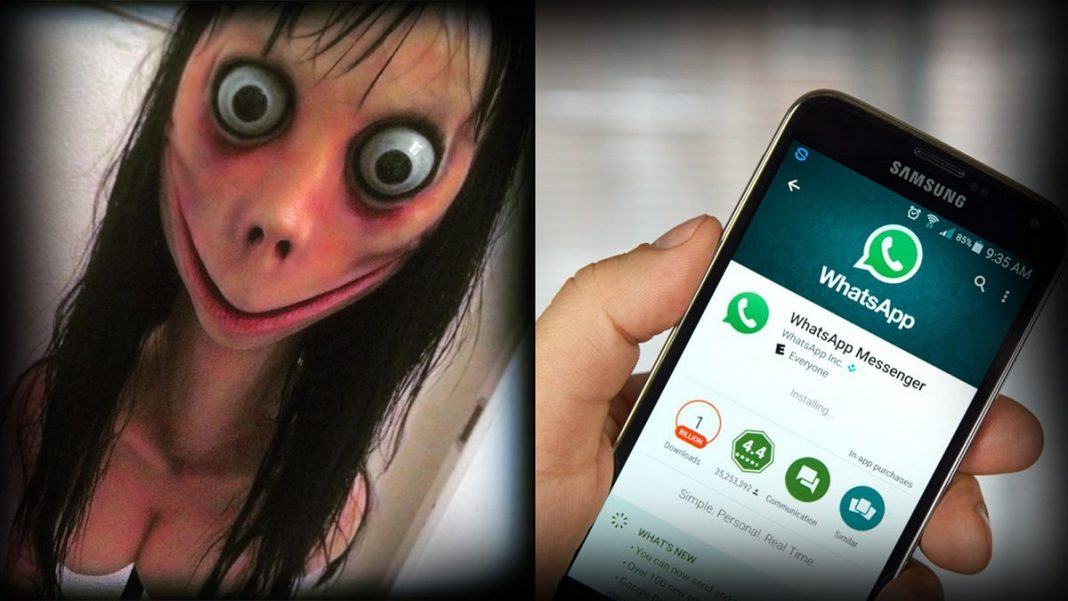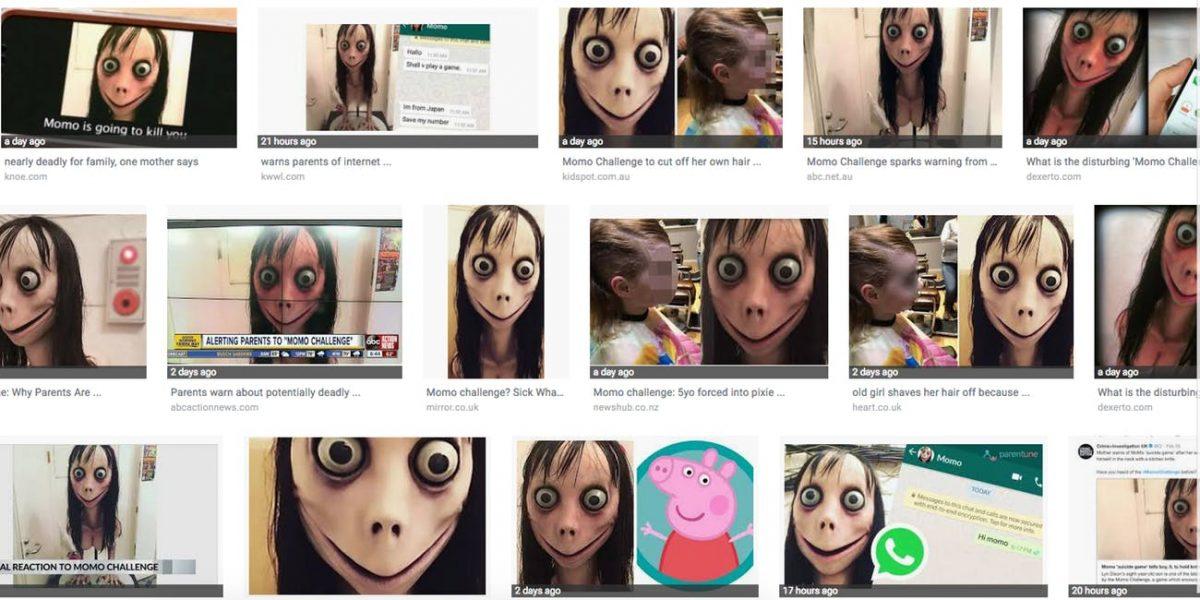
It started on Tuesday when a Twitter account by the name of Wanda Maximoff posted an alarming post to parents and soon became known as the ‘Momo Challenge,’ an internet hoax that truly terrified parents all over the world.
“Warning! Please read, this is real,” she tweeted. “There is a thing called ‘Momo’ that’s instructing kids to kill themselves,” the attached screenshot of a Facebook post reads. “INFORM EVERYONE YOU CAN.” This was retweeted over 22,000 times and the creepy face of “Momo” was quickly picked up by local news stations spreading the story like wildfire all over the internet. Even Kim Kardashian fell prey to this by and posted a warning to her 129 million Instagram followers.
Momo happened before
If this sounds vaguely familiar, it’s because it is. The Momo challenge hoax hit less than a year ago when local news outlets were reporting about it last summer. YouTube confirmed that, contrary to press reports, it hasn’t seen any evidence of videos showing or promoting the “Momo challenge” on its platform. If the videos did exist, a spokesperson for YouTube said, they would be removed instantly for violating the platform’s policies. Additionally, there have been zero corroborated reports of any child ever taking his or her own life after participating in this phony
A lot of this relies on people believing their local school or police force knows what they’re talking about when it comes to the internet.Unfortunately most don’t have a clue and are sending letters to parents warning of non-existent issues like YouTube videos being “hacked”.
— Jim Waterson (@jimwaterson) February 28, 2019

What is Momo?
“Momo” itself is an innocuous sculpture created by the artist Keisuke Aisawa for the Japanese special-effects company Link Factory. The real title of the artwork is Mother Bird, and it was on display at Tokyo’s horror-art Vanilla Gallery back in 2016. After some Instagram photos of the exhibit were posted to the subreddit Creepy, it spread, and the “Momo challenge” urban legend was born.
Internet Hoax Formula
All of these challenges and trends follow the same formula: A local news station runs a piece overstating a dangerous teen trend. Concerned parents flock to social media to spread the word. Actual teenagers and anyone else who lives their life Extremely Online mock them for their naïveté. Brands and influencers hop on the trend, parodying it and exploiting it for their own gain. And trolls take advantage of those who believe it’s real, often by creating and posting content that seemingly confirms parents’ worst fears. SNL brilliantly parodied this cycle in 2010. Since then, it has only gotten worse.
These trends are “part of a moral panic, fueled by parents’ fears in wanting to know what their kids are up to,” Benjamin Radford, a folklorist and research fellow at the Committee for Skeptic Inquiry, told Rolling Stone. And spreading them can actually end up causing harm. “These stories being highly publicized, and starting a panic means vulnerable people get to know about it and that creates a risk,” the U.K.-based suicide-awareness charity Samaritans told The Guardian. Some kids can also end up hurting themselves by participating in the trend ironically.
Parents Out Of Touch
Parents have always felt out of touch with younger generations, but smartphones have seemingly widened that gulf. Sixty percent of teens have created accounts for apps or social-media sites without their parents’ knowledge, according to a 2016 study by the National Cyber Security Alliance. And only 13 percent of teenagers believed their parents “understood the extent of their internet use.” That gap in understanding has allowed this very specific type of misinformation to flourish.
Worried parents share these hoax stories relentlessly on Facebook, Twitter, and Instagram. They beg the platforms themselves to do something to fix the mess. Many parents believe that spreading awareness about the latest dangerous craze will help kids stay safe, but they could very well be doing the opposite.
Dealing with an internet hoax
The latest parental panic on social media — over a purported challenge for kids to complete harmful tasks — elevates the importance of establishing an open dialogue with children and taking advantage of online parental controls.
Warnings about the “Momo challenge” swept Facebook and other social media in recent days, as parents worried about purported videos that encourage children to hurt themselves or do other harmful tasks such as turning on stoves without telling their parents. The parental warnings were accompanied by a disturbing image of a grinning creature with matted hair and bulging eyes.
But the challenge is believed to be a hoax. It’s unclear how many videos exist or to what extent they have circulated, among children or elsewhere. Some of the videos might have been made in response to media attention surrounding the challenge. Meanwhile, the image of the grinning creature is reportedly from a Japanese sculpture.
Fact Check
Fact-checking site Snopes said the challenge first appeared in mid-2018 linked to suicide reports without actual evidence. YouTube said it hasn’t received “any recent evidence of videos showing or promoting the Momo challenge” on its service.
So why the panic? Experts say internet hoaxes focused on children tap into fears that parents have about protecting their children online and elsewhere. In addition to anxiety about “screen time” in general, there is certainly plenty of problematic videos that children shouldn’t watch. It’s hard for parents to police everything children do online. Fears were compounded when some school systems, local media and even police sent out their own warnings, accompanied by fuzzy facts.
“All moral panics feed on some degree of reality, but then they get blown out of proportion,” said Steve Jones, a professor of communications at the University of Illinois at Chicago.
These hoaxes echo panics from decades past, like the false belief in the 1980s that teenagers were hearing Satanic messages in rock song lyrics, he said.
“Once the internet is involved in the mix, things get speeded up and they get more widespread,” Jones said.
Open Dialogue
The most important thing parents can do is to establish an open dialogue with their children about what they’re seeing online and hearing from other children, said Jill Murphy, editor-in-chief at Common Sense Media, a San Francisco-based nonprofit group focused on kids’ use of media and technology.
“Parents are increasingly frustrated with feeling surprised or caught off guard by what is being put in front of their kids,” she said. Whether the “challenges” are real or not, she said, “they elevate the idea that they may or may not know exactly what their kids are absorbing through these platforms.”
That’s why talking to children is important, she said. “Take the right time to have an age-appropriate conversation, and help your kids understand not everything on the internet is real.”
Parental Settings
She said parents should also take advantage of parental settings built into many products and services. Most web browsers can block certain websites, limit what children can see and provide a report about what sites a child visited. Smartphones and tablets can limit screen time and access to apps. YouTube Kids lets parents disable search and turn off “autoplay.” Murphy said these free tools are good enough; no need to pay for third-party parental apps.
Another option is to download apps from shows or channels directly rather than going through streaming services such as YouTube. PBS, Peppa Pig, Nick Jr. and other popular services for kids have their own apps, with pre-screened videos deemed appropriate for kids.
And though it may seem contradictory, going online to research the hoaxes could also help. The Momo hoax was debunked fairly quickly after people questioned it, Jones said. Give weight to trusted news sources and fact-checking sites like Snopes.com.
“Take a deep breath and go online as strange as that may seem in some sense,” he said. “Do some research and try to figure it out for yourself.”


